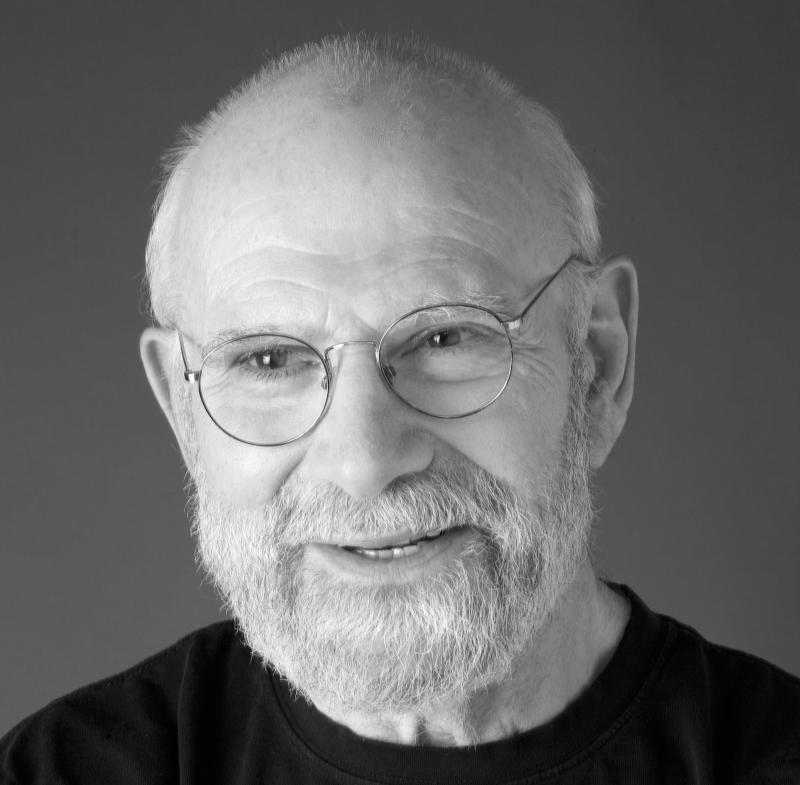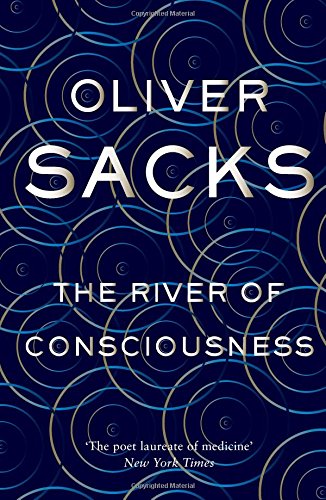Oliver Sacks: The River of Consciousness review - a luminous final collection of essays | reviews, news & interviews
Oliver Sacks: The River of Consciousness review - a luminous final collection of essays
Oliver Sacks: The River of Consciousness review - a luminous final collection of essays
Intellectual rigour, huge humanity: a farewell gift from the great neurologist

Oliver Sacks was the neurologist – and historian of science, and naturalist – whose exceptionally elegant, clear and accessible prose has captivated that almost mythical creature, the general audience, through more than a dozen books as well as many essays.
An autobiographer too, aware of his own flaws and talents, Sacks was an enthusiastic mountain climber (he suffered a bad leg injury while climbing), a drug addict as a young man, a passionate swimmer all his life; in his last decade he found and realised, after a past of transitory gay affairs, that profound human dream, a loving and fulfilling emotional and intellectual relationship with a committed partner. Diagnosed with inoperable cancer in early 2015, a short book titled, accurately but not mawkishly, Gratitude, was published with his epigraph: I am now face to face with dying but I am not finished with living. He died at the end of August that year, aged 82.
 What is entrancing is the depth of his self-knowledge, translated and metamorphosed into an engaged, intense intellectual – and deeply affectionate – connection with scholars alive and dead, including friendships with WH Auden and Francis Crick. Above all there is his ability to empathise, always with profound curiosity, with the quirky and idiosyncratic brains of his patients, who were so beyond the norm neurologically.
What is entrancing is the depth of his self-knowledge, translated and metamorphosed into an engaged, intense intellectual – and deeply affectionate – connection with scholars alive and dead, including friendships with WH Auden and Francis Crick. Above all there is his ability to empathise, always with profound curiosity, with the quirky and idiosyncratic brains of his patients, who were so beyond the norm neurologically.
As he himself said, he worked at the interface between biography and biology. His reporting of human incidents was concerned with those unable to function in ordinary society, but Sacks never saw them as damaged or alien “others”, more as different. The result for readers has been a sequence of mesmerising, ever entertaining and hilarious, but nevertheless serious meditations on the brain – and consciousness.
This selection of 10 essays, chosen by Sacks in the last months of his life, is just that, but more too: it echoes Sacks’ preoccupation with the interstices, intersections and crossovers between what may be traditionally known as the arts and sciences. It is initiated by a startling essay on Charles Darwin’s profound engagement with attempting to find out how plants operate, how they may learn, adapt and communicate.
In just a few pages Sacks casts new light on the popular image of the scientist of evolution as being more concerned with animal rather than plant life, showing him as a passionate botanist. He carries this topic on another journey as he looks at the question of sentience, in plants and earthworms (that other Darwinian topic). There is an absorbing and succinct discussion of sentience and habituation, of forms of learning, short- and long-term. Your garden will never seem the same again. Nor will jellyfish, which can also learn and adapt: they have 1,000 nerve cells, while human beings have a hundred billion. There is emotion, and character: each living thing is unique, literally.
Sacks has always excelled in showing the reader all kinds of information, and different ways of looking and understanding through personal anecdote and case history
The essay “Scotoma: Forgetting and Neglecting in Science” narrates a handful of astonishing episodes over the millennia where major discoveries were made and simply forgotten about until the time came when others would make the same discoveries, which were then assimilated. Scotoma comes from the Greek word for “darkness”, and in medical terminology we are told means a neurological lesion in the brain which produces a gap in consciousness. Sacks applies this to learning things about Tourette’s syndrome and migraine, as well as the phenomenon of phantom limbs (when an amputee has physical sensations from a leg or arm which is no longer there): all these had already been researched before later being disregarded. Perhaps the most striking regression was that in the third century BC, when Aristarchus proposed a heliocentric solar system; his observations were accepted by his peers, then disregarded for millennia.
“Speed” looks at just that, its perception and the ways in which normal actions – walking, running a bath, whatever – are distorted and changed when a person is neurologically challenged. HG Wells comes into play with his notion of “The Accelerator” and “The Retarder”, explored in The Time Machine and The New Accelerator, which Sacks had read as a child. He shows us how different people with different conditions move to different tempos. A man with Parkinson’s wiping his nose takes hours, but himself perceives the gesture as just a moment: there is both “personal” and “clock” time.
Sacks has always excelled in showing the reader all kinds of information, and different ways of looking and understanding through personal anecdote and case history: everything he touches has a living, if not always human face. Even in this sequence of short essays he relates people to all living things, rejoicing in connections: for just a moment you honestly think you are grasping the most complex of ideas and histories. There is an excellent ten-page bibliography, a fine jumping-off place to help us go further.
Sacks is also a very attractive fan: from the past he had Freud, William James and, of course, Darwin, who in his way saw unity in all things. His own vitality in these pages seems so extraordinary that it is difficult to believe he is no longer here, and that he confronted and wrote about his own mortality so eloquently. In a delicate irony this posthumous book is dedicated, as he wished, to Bob Silvers, the legendary founder-editor the New York Review of Books, who died this year. Rarely in such small compass can a writer have given us so much to think about, engaging our imagination as well as our mind.
- The River of Consciousness by Oliver Sacks (Picador, £18.99)
- Read more book reviews on theartsdesk
The future of Arts Journalism
You can stop theartsdesk.com closing!
We urgently need financing to survive. Our fundraising drive has thus far raised £49,000 but we need to reach £100,000 or we will be forced to close. Please contribute here: https://gofund.me/c3f6033d
And if you can forward this information to anyone who might assist, we’d be grateful.

Subscribe to theartsdesk.com
Thank you for continuing to read our work on theartsdesk.com. For unlimited access to every article in its entirety, including our archive of more than 15,000 pieces, we're asking for £5 per month or £40 per year. We feel it's a very good deal, and hope you do too.
To take a subscription now simply click here.
And if you're looking for that extra gift for a friend or family member, why not treat them to a theartsdesk.com gift subscription?
more Books
 'We are bowled over!' Thank you for your messages of love and support
Much-appreciated words of commendation from readers and the cultural community
'We are bowled over!' Thank you for your messages of love and support
Much-appreciated words of commendation from readers and the cultural community
 Elizabeth Alker: Everything We Do is Music review - Prokofiev goes pop
A compelling journey into a surprising musical kinship
Elizabeth Alker: Everything We Do is Music review - Prokofiev goes pop
A compelling journey into a surprising musical kinship
 Natalia Ginzburg: The City and the House review - a dying art
Dick Davis renders this analogue love-letter in polyphonic English
Natalia Ginzburg: The City and the House review - a dying art
Dick Davis renders this analogue love-letter in polyphonic English
 Tom Raworth: Cancer review - truthfulness
A 'lost' book reconfirms Raworth’s legacy as one of the great lyric poets
Tom Raworth: Cancer review - truthfulness
A 'lost' book reconfirms Raworth’s legacy as one of the great lyric poets
 Ian Leslie: John and Paul - A Love Story in Songs review - help!
Ian Leslie loses himself in amateur psychology, and fatally misreads The Beatles
Ian Leslie: John and Paul - A Love Story in Songs review - help!
Ian Leslie loses himself in amateur psychology, and fatally misreads The Beatles
 Samuel Arbesman: The Magic of Code review - the spark ages
A wide-eyed take on our digital world can’t quite dispel the dangers
Samuel Arbesman: The Magic of Code review - the spark ages
A wide-eyed take on our digital world can’t quite dispel the dangers
 Zsuzsanna Gahse: Mountainish review - seeking refuge
Notes on danger and dialogue in the shadow of the Swiss Alps
Zsuzsanna Gahse: Mountainish review - seeking refuge
Notes on danger and dialogue in the shadow of the Swiss Alps
 Patrick McGilligan: Woody Allen - A Travesty of a Mockery of a Sham review - New York stories
Fair-minded Woody Allen biography covers all bases
Patrick McGilligan: Woody Allen - A Travesty of a Mockery of a Sham review - New York stories
Fair-minded Woody Allen biography covers all bases
 Howard Amos: Russia Starts Here review - East meets West, via the Pskov region
A journalist looks beyond borders in this searching account of the Russian mind
Howard Amos: Russia Starts Here review - East meets West, via the Pskov region
A journalist looks beyond borders in this searching account of the Russian mind
 Henry Gee: The Decline and Fall of the Human Empire - Why Our Species is on the Edge of Extinction review - survival instincts
A science writer looks to the stars for a way to dodge our impending doom
Henry Gee: The Decline and Fall of the Human Empire - Why Our Species is on the Edge of Extinction review - survival instincts
A science writer looks to the stars for a way to dodge our impending doom
 Jonathan Buckley: One Boat review - a shore thing
Buckley’s 13th novel is a powerful reflection on intimacy and grief
Jonathan Buckley: One Boat review - a shore thing
Buckley’s 13th novel is a powerful reflection on intimacy and grief
 Help to give theartsdesk a future!
Support our GoFundMe appeal
Help to give theartsdesk a future!
Support our GoFundMe appeal

Add comment